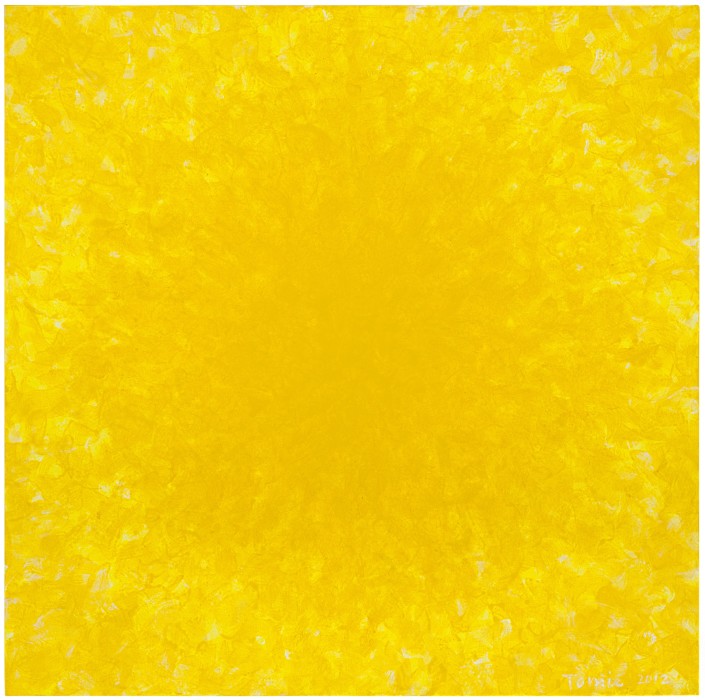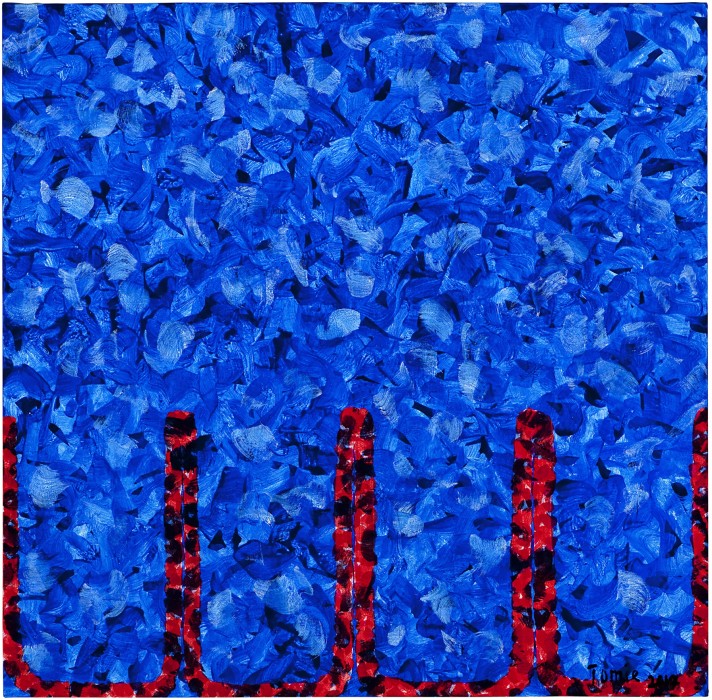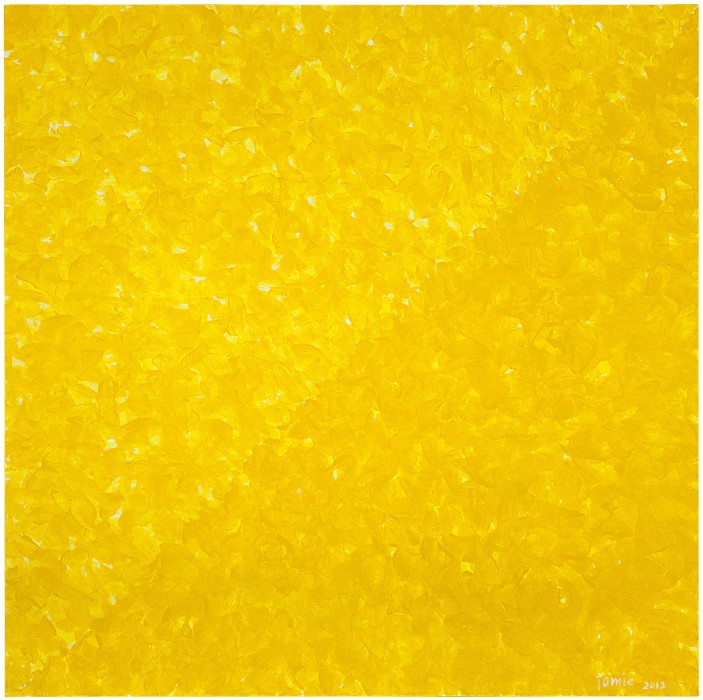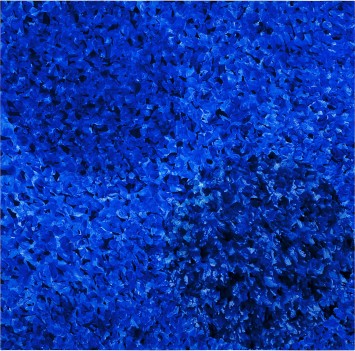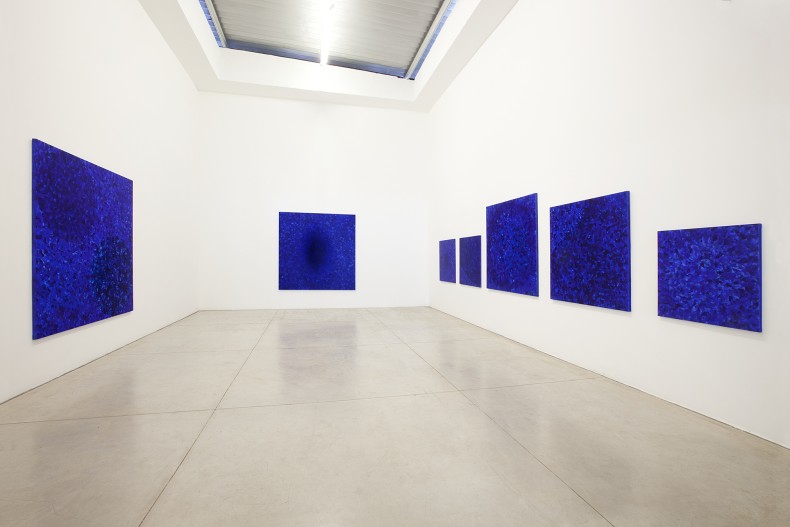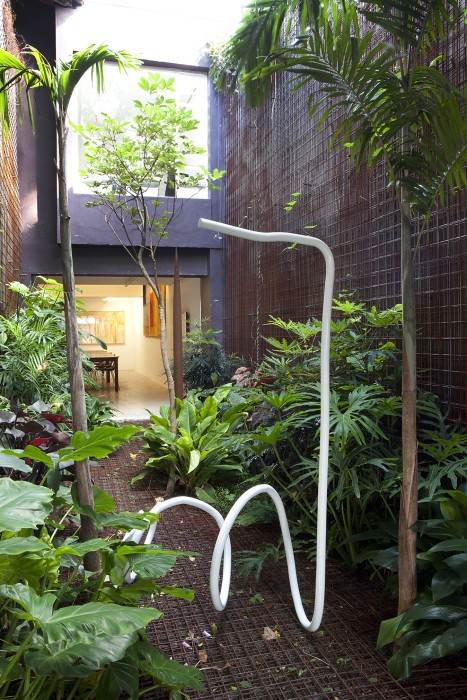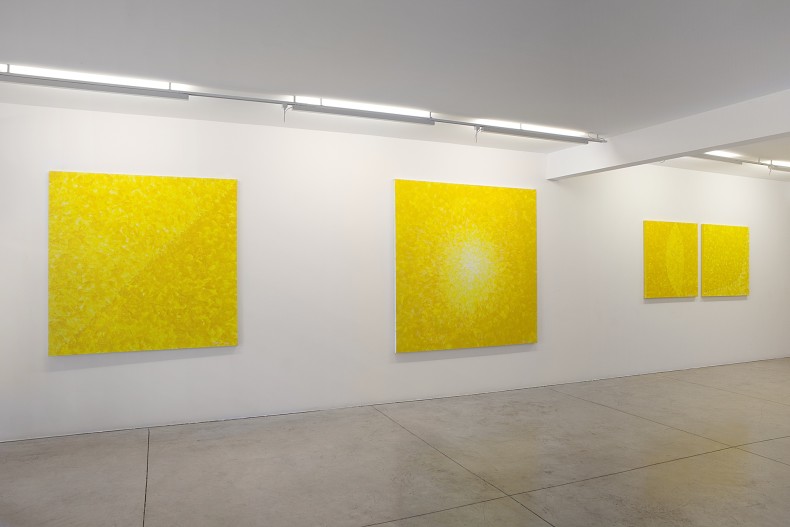In the exact year Japanese artist Tomie Ohtake celebrates her 100th birthday (77 living in Brazil), four exhibitions present a panorama of her extensive artistic production. For over five decades the artist has been developing constant research in painting, sculpture, drawing and engraving. The significance of her body of work, which is recognized since the 1960s, is part of a history that began with her participation in Seibi Group (with Flávio Shiró, Manabu Mabe and Tikashi Fukushima, among others). Since then, she has become a reference point for her coherent and determined research on color and line, which led to her unique understanding of these aspects in the supports she uses. Besides this exhibition at Nara Roesler Gallery, which will open on February 21st, three other exhibitions are scheduled to take place at the institute named after her.
Curator Paulo Herkenhoff once said about Tomie Ohtakes’s art: “the space is an unstable field seeking rest.” When examining her most recent works, one has the impression that the artist’s creative energy follows a correlated, but opposite path: her work may be described as a stable field (in terms of technical rigor) permanently seeking movement and transformation. In 2005, curator Agnaldo Farias, who is responsible for this show, noted that despite the plastic and formal richness of her work, the diversity of Tomie Ohtake’s production “once more surprised us” with something entirely new.
The analysis remains valid: in this set of works, comprised of paintings and sculptures created in 2011 and 2012, the artist reaches extremely high levels of subtlety and physicality through her well-known precise technical choices – which include an amazing variety of paintbrushes, an extremely rich variety of materials and pigments, a rare knowledge (which she is capable of transmitting) on their use, as well as on how to place the line in the three-dimensional space, as observed in her sculptures. However, Tomie Ohtake is able to maintain the well-known rigor of her work and reinvent it, at the same time, in amazing compositions that reveal a new strength in her research, especially in terms of depth and luminosity of the canvases (which have different dimensions), and in the simple and intriguing kinetic dynamism of her sculptures, which are based in lines.
According to the artist, this set of paintings may be described as a search for the transparency of the canvas. Tomie Ohtake seems to create different levels of both material and spectral colors that contain slightly warm black-colored abysses. This is actually obtained through the combination of different tones of purple, especially in the works in which the predominant colors are blue and green. In the yellow-colored and more luminous paintings, a similar procedure results in the opposite effect and the painting is a source of luminous emission. As for the sculptures, she continues to experiment with the kinesthesia of the line in space, creating movement and dynamism through the use of shapes that suggest a dynamics of oscillation and rest.
This description does not mean that the purpose of her work is the effect in itself. Tomie Ohtake’s history has already made evident her commitment with a meticulous research that led to her deep understanding of chromatic properties, such as glaze, transparency, opacity, irradiation, as well as of the relation between movement, rest, balance and tension that is involved in the use of the line in sculptures.
Farias notes that, in order to reach this level of refinement “one of the foundations of Ohtake’s poetic project consists in permanently questioning aspects that are taken for granted and about which there is nothing left to say.” Her work is a field that has abundant gradations of chromatic vibration and lines. It stimulates properties of the eye that are seldom addressed, even today, in which the countless available images (including those of art) would suggest that the visual experience can no longer be renewed.
Paulo Herkenhoff’s quote that opens this text is extremely relevant; his description fits with precision Ohtake’s sculptures, in particular: in her work “the space is an unstable field seeking rest.” However, using his metaphor, this state of rest is impermanent. At each new step in the artist’s research, she includes new subtle aspects that improve her work without invalidating the consistency and the relevance of what had been done before, and this why this renowned artist, at the age of 100, remains absolutely contemporary.
about the curator
Agnaldo Farias was born in Minas Gerais State, in 1955. He has a PhD in Architecure and Urban Design from the University of São Paulo (1997), where he is currently a professor in the History of Architecture and Aesthetics of the Project Department of the College of Architecture and Urban Design. Agnaldo Farias was a co-curator of three São Paulo Biennials (2010, 1996, 1992), as well as several other exhibitions. He was chief-curator at MAM-RJ (1998/2000) and director of temporary exhibitions at MAC-USP (1990/1993). He is currently a curatorial advisor for Tomie Ohtake Institute and has published several books, such as As Naturezas do Artifício - Amélia Toledo (Editora W11, 2004); Daniel Senise - The piano factory (Andréa Jacobsen, 2003); and Arte brasileira hoje (Publifolha, 2002).


